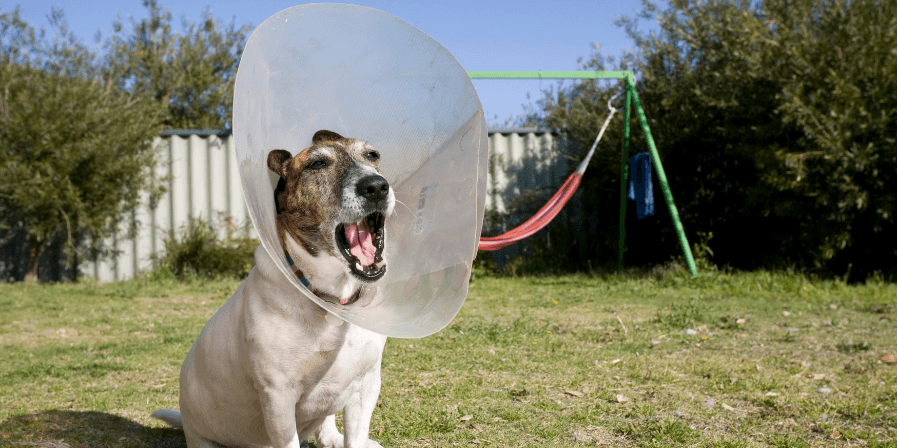Dog Neutering: Everything You Need to Know

Neutering is one of the most responsible decisions a pet owner can make for their male dog. It is a common surgical procedure that involves removing the testicles to prevent reproduction and reduce testosterone levels. Neutering offers several health and behavioral benefits while also helping control the pet population. If you're considering this procedure for your dog, this guide will provide all the essential details, from preparation and costs to recovery and alternatives.
What Is Dog Neutering?
Dog neutering, also known as castration, is a surgical procedure performed by veterinarians to remove a male dog's testicles. This procedure is typically done under general anesthesia to ensure the dog experiences no pain during the surgery. By removing the testicles, neutering prevents the production of sperm and significantly reduces testosterone levels. This has several effects on the dog's health and behavior, including a decrease in aggressive tendencies, reduced risk of prostate issues, and the elimination of the ability to father puppies.
Anatomy of the Male Reproductive System in Dogs
A male dog's reproductive system consists of two testicles located in the scrotum between their back legs. These testicles are responsible for producing sperm and testosterone, the primary male sex hormone. Testosterone plays a crucial role in developing male characteristics, regulating sex gland function, and influencing reproductive behavior. Each testicle contains an epididymis, a structure where sperm mature before traveling through the vas deferens. The vas deferens is a tube that carries sperm to the urethra, where it mixes with seminal fluid from the prostate and other sex glands. This combination forms semen, which is expelled through the penis during mating. The penis is covered by a protective sheath called the prepuce. When a dog becomes aroused, the penis enlarges and protrudes from the prepuce, allowing for mating.During a neutering procedure, a small incision is made either directly into the scrotum (scrotal technique) or in the area between the scrotum and prepuce (prescrotal technique). The testicles are then removed through this incision, preventing sperm production and significantly reducing testosterone levels.
Why Would a Dog Need to Be Neutered?
Neutering is primarily performed to prevent unwanted pregnancies, but it also offers several other benefits. One of the biggest advantages is its contribution to pet population control. Millions of unwanted puppies end up in shelters each year, and many are euthanized due to overcrowding. Neutering reduces the number of stray dogs and helps curb overpopulation. Health benefits are another important reason why neutering is recommended. It eliminates the risk of testicular cancer and significantly lowers the chances of prostate problems, including benign prostatic hyperplasia, which can lead to discomfort and difficulty urinating. In addition, neutering reduces the likelihood of hormone-related tumors and infections that can develop in intact males. Behavioral improvements can also be observed after neutering, though the effects vary depending on the individual dog. Many pet owners notice a reduction in aggression, roaming tendencies, and territorial marking. Since neutered dogs are less driven by mating instincts, they are less likely to run away or get into fights with other males. However, it is important to note that neutering does not guarantee a change in all behaviors, especially those that are learned rather than hormone-driven.
Effectiveness of Dog Neutering
Neutering is a highly effective way to prevent reproduction, but its impact on behavior and health depends on several factors, including the dog's age, breed, and temperament. If a dog is neutered before reaching sexual maturity, which is typically around six to nine months of age, it is more likely to prevent behaviors such as mounting and excessive territorial marking. However, if a dog is neutered later in life, certain habits may already be established and might not disappear entirely after surgery. While neutering reduces testosterone levels, it does not completely eliminate them, as small amounts are still produced by the adrenal glands. Some owners worry about potential negative effects, such as weight gain or a loss of energy. While neutered dogs may experience a slight decrease in metabolism, proper diet and regular exercise can easily prevent weight gain. In terms of energy levels, neutering does not change a dog’s overall personality or enthusiasm for play and interaction.
Cost of Dog Neutering
The cost of neutering varies depending on several factors, including location, veterinary clinic, dog size, and any additional services required. On average, neutering can cost anywhere from ₹2,000 to ₹15,000 in India, with prices higher in metropolitan cities.
Additional costs may include:
- Pre-surgical blood tests
- Pain medications and antibiotics
- Post-operative check-ups
Some animal welfare organizations and veterinary clinics offer subsidized or low-cost neutering services, making the procedure more affordable for pet owners.
Preparation for Dog Neutering
Before the procedure, the dog must undergo a pre-surgical checkup to ensure he is healthy enough for anesthesia and surgery. This may include blood tests, a physical examination, and a discussion of any pre-existing conditions or medications the dog is taking. Most veterinarians will instruct owners to withhold food for at least 8 to 12 hours before surgery to reduce the risk of complications during anesthesia. Water is usually allowed until a few hours before the procedure. On the day of the surgery, it is best to keep the dog calm and comfortable. Bringing along a familiar blanket or toy may help ease anxiety. Once the procedure is complete, the dog will need some time to recover from anesthesia before being discharged.
Complications of Dog Neutering While neutering is considered a safe procedure, complications can occur in rare cases. The most common risks include excessive bleeding, infection, and adverse reactions to anesthesia. Swelling or bruising around the surgical site is normal, but if the incision becomes red, swollen, or emits a foul odor, it may indicate an infection that requires veterinary attention. Another potential complication is scrotal hematoma, where blood accumulates in the scrotal area, causing swelling and discomfort. This usually resolves on its own but may require intervention if severe. In rare cases, some dogs may experience a change in coat texture or slight weight gain, but these effects are typically manageable with proper care.
Post-Op Care and Recovery for Dog Neutering
Recovery from neutering is usually smooth, with most dogs returning to normal activities within 10 to 14 days. During this period, it is essential to prevent excessive movement, jumping, or rough play, as this can put strain on the surgical site. An Elizabethan collar (E-collar) or a surgical recovery suit may be necessary to prevent the dog from licking or biting the incision. Keeping the incision clean and dry is crucial, and owners should follow the veterinarian’s instructions regarding wound care. Pain management is an important part of recovery. Most dogs receive pain medication after surgery, and it is essential to administer it as prescribed. If the dog shows signs of excessive pain, lethargy, or loss of appetite, a follow-up visit may be necessary.
Alternatives to Dog Neutering
For owners who are hesitant about traditional neutering, alternative options are available. One option is chemical castration, which involves the use of hormone injections to temporarily suppress fertility and testosterone production. This is a reversible method but requires regular administration to maintain effectiveness. Another alternative is vasectomy, where the spermatic cords are cut but the testicles remain intact. This prevents reproduction while preserving testosterone levels. However, vasectomy does not provide the same health and behavioral benefits as full neutering.
Final Thoughts
Neutering is a responsible choice that offers numerous benefits, including population control, improved health, and better behavior. While the decision should be made based on individual circumstances, understanding the procedure, costs, risks, and recovery process can help pet owners make an informed choice. With proper preparation and post-operative care, neutering can ensure a healthier, happier life for dogs and contribute to responsible pet ownership. At DCC Animal Hospital, our expert veterinarians provide safe and compassionate neutering services using advanced surgical techniques and comprehensive post-operative care. As the best vet in Delhi NCR, we prioritize your pet’s well-being, ensuring a stress-free experience and a smooth recovery. Book a consultation today to discuss your pet’s needs and take a step towards responsible pet care.
FAQs
1. At what age should I neuter my dog?
The ideal age for neutering depends on the dog's breed and size. Generally, small to medium-sized dogs can be neutered as early as six months, while larger breeds may benefit from waiting until they are 12 to 18 months old to allow proper growth and development. It is best to consult with a veterinarian, to determine the right timing for your pet.
2. Will neutering change my dog’s personality?
Neutering does not drastically change a dog’s core personality, but it can reduce hormone-driven behaviors such as aggression, roaming, and excessive marking. However, behaviors that have become habits or are due to training and environment will remain the same. If you have concerns about your dog's behavior, consulting a professional, can help you make an informed decision.


 How can we help?
How can we help?